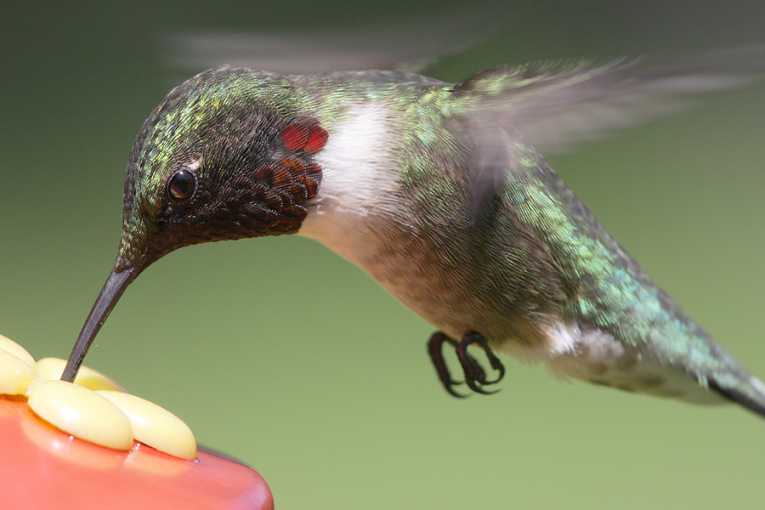Some say it with flowers, some will serenade with a song, but for male hummingbirds the trick of winning hearts may lie in a flutter of the tail. This shaking of male tail-feathers produces a note that could be sweet enough to charm watching females - a sound that appears to be distinct for each species of hummingbird. Now the complex resonances of these feathery love-making moves have been teased apart, in new research being published in Science today.
Diving for love
The distinctive note produced during hummingbird courtship rituals has been heard by many-an-observer of these tiny nectar-loving birds. It is a quite separate sound from the typical humming which give the birds their name. Rather than being produced during day-to-day hovering activities, this love-note is struck during the dramatic diving display that males perform in front of females. It appears to ring out when the male reaches the very bottom of his dive, triggered by a sudden flaring, and closing, of the tail feathers.
The team behind this new research, led by led Christopher Clark of Yale University, came equipped with a scanning laser, a wind tunnel and a fistful of tail feathers. The laser, known as a Doppler Vibrometer, is an excellent tool for measuring the vibrations produced by fluttering feathers - although it is more normally used to inspect aircraft wings. Using this equipment, plus videos of hummingbirds in the wind tunnel, the team were able to decipher exactly what happened when the male's tail feathers were flared.Turn up the volume, crank out the tone
The results of their tests, across a number of hummingbird species, showed a surprising diversity. "The sounds that hummingbird feathers can make are more varied than I expected," said Clark. The team realized that the way the feathers were arranged can help to produce more than one tone - and to make them louder too. Resonance between the feathers can turn the volume by up to 12 decibels.
Just like a tuning fork that resonates to a similarly-tuned fork vibrating nearby, when one tail feather is vibrated by the sudden exposure to fast-moving air, it can set off vibrations in adjoining feathers. As well as boosting volume, this resonance also gave each species its own signature sound. The interaction of these mutually vibrating feathers, which depended on their position, size, shape and stiffness, produced a tone appears unique to each species of hummingbird.
Whilst helping scientists to better understand the mechanics of hummingbird's noisy courting, the research does not yet indicate exactly what drove the hummingbird to harness aerodynamics for sexual display. It could be that the sound produced is a direct reflection of the bird's fitness in flight - and so a measure of desirability to the courted females. Or it could be that the sound is just incidental to the overall diving display. More work will be needed to confirm whether the sound-scaping efforts of the male birds really does set the female heart a-fluttering.
Top Image Credit: Ruby-throated Hummingbird (archilochus colubris) © Steve Byland










